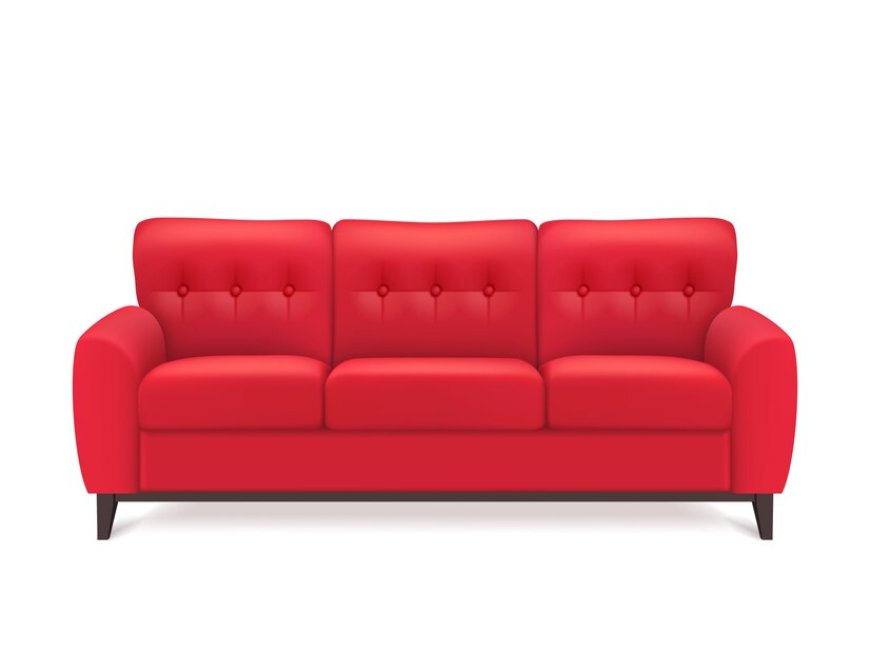Your sofa is more than just a piece of furniture; it’s a central part of your living space, where you relax, entertain guests, and spend quality time with family. Upholstery plays a crucial role in the comfort, durability, and aesthetics of your sofa. Whether you’re looking to reupholster an old favorite or selecting upholstery for a new sofa, understanding the various aspects of upholstery can help you make informed decisions. In this comprehensive guide, we’ll explore everything you need to know about upholstery for sofa, from materials and maintenance to professional reupholstery and DIY tips.
Understanding Upholstery: What It Is and Why It Matters
Definition and Components
Upholstery refers to the materials—including fabric, padding, webbing, and springs—that make up the soft coverings of a sofa. It is a combination of these components that provide comfort, support, and aesthetic appeal. The main components of upholstery include:
- Fabric: The outermost layer that is visible and comes in contact with the user.
- Padding: Materials such as foam or batting that add comfort and shape to the sofa.
- Webbing: Straps or webbing materials that provide support and distribute weight.
- Springs: Metal coils that offer resilience and support, contributing to the overall comfort.
Importance of Good Upholstery
Good upholstery enhances the functionality and appearance of your sofa. It impacts several factors:
- Comfort: High-quality padding and springs ensure a comfortable seating experience.
- Durability: Durable fabrics and robust construction extend the lifespan of your sofa.
- Aesthetics: The fabric and design choices reflect your personal style and complement your home decor.
- Maintenance: Easy-to-clean materials can simplify upkeep and maintain the sofa’s appearance over time.
Choosing the Right Upholstery Material
Types of Upholstery Fabrics
Selecting the right fabric is crucial as it determines the look, feel, and longevity of your sofa. Here are some popular upholstery fabrics:
Natural Fabrics
- Cotton: Soft, breathable, and available in a variety of colors and patterns. However, it may stain easily and requires treatment to enhance durability.
- Linen: Known for its natural texture and strength. Linen is durable and resistant to pilling but wrinkles easily and can be difficult to clean.
- Wool: Warm, soft, and highly durable. Wool resists wrinkling and is naturally flame-resistant, but it may require professional cleaning.
- Leather: A luxurious, durable material that becomes more beautiful with age. It is easy to clean and maintain but can be expensive and sensitive to scratches.
Synthetic Fabrics
- Polyester: Durable, resistant to fading and stains, and easy to clean. However, it may not be as breathable as natural fabrics.
- Nylon: Strong and resistant to abrasion, making it ideal for high-traffic areas. Nylon is often blended with other fibers to enhance durability.
- Acrylic: Mimics the feel of wool and is resistant to fading and stains. It can sometimes pill and may not be as durable as other synthetics.
- Microfiber: Made from polyester, it is soft, durable, and stain-resistant. Microfiber is easy to clean and maintains its appearance over time.
Considerations When Choosing Upholstery
When selecting upholstery for your sofa, consider the following factors:
- Usage: Determine how often the sofa will be used and by whom. For high-traffic areas or households with children and pets, choose durable, stain-resistant fabrics.
- Comfort: Ensure the fabric feels comfortable to sit on. Test different materials to find one that suits your preference.
- Aesthetic Appeal: Choose a fabric that complements your home decor. Consider the color, pattern, and texture to create the desired look.
- Maintenance: Consider the ease of cleaning and maintaining the fabric. Some materials require professional cleaning, while others are more straightforward to care for.
- Budget: Balance your preferences with your budget. Higher-quality fabrics often come with a higher price tag but offer greater durability and aesthetic appeal.
Maintaining Upholstery: Tips and Best Practices
Regular Cleaning
Regular cleaning is essential to maintain the appearance and longevity of your sofa. Here are some general tips for cleaning upholstery:
- Vacuuming: Use a vacuum cleaner with an upholstery attachment to remove dust, dirt, and debris from the surface and crevices of the sofa.
- Spot Cleaning: Address spills and stains immediately. Blot (don’t rub) the area with a clean cloth and use a fabric-appropriate cleaner.
- Professional Cleaning: Schedule professional cleaning for deep cleaning and maintenance, especially for delicate or high-end fabrics.
Protecting Upholstery
- Use Sofa Covers: Sofa covers can protect the upholstery from spills, stains, and wear. They are especially useful in homes with children or pets.
- Avoid Direct Sunlight: Prolonged exposure to sunlight can cause fabrics to fade and weaken. Position your sofa away from windows or use curtains and blinds.
- Rotate Cushions: Regularly rotate and flip cushions to ensure even wear and prevent sagging.
Handling Specific Stains
Different stains require different cleaning approaches. Here are some common stains and how to handle them:
- Food and Drink: Blot the spill with a clean cloth and use a mild soap solution. Avoid using excessive water to prevent fabric damage.
- Ink: Dab the stain with rubbing alcohol or a specialized ink remover. Test the solution on an inconspicuous area first.
- Grease: Sprinkle baking soda or cornstarch on the stain to absorb the grease. After a few hours, vacuum the area and clean with a mild detergent solution.
Professional Upholstery Services
Benefits of Professional Upholstery
Hiring a professional upholsterer offers several benefits:
- Expertise: Professionals have the skills and experience to handle a wide range of upholstery issues, from minor repairs to complete reupholstery.
- Quality Materials: Professional services often have access to high-quality materials and fabrics that are not available to the general public.
- Customization: Professional upholsterers can provide customized solutions to match your specific needs and preferences, including custom fabrics, patterns, and designs.
- Time-Saving: Professional reupholstery saves you the time and effort of doing it yourself, ensuring a high-quality result.
Finding a Professional Upholsterer
To find a reliable professional upholsterer, consider the following steps:
- Research: Search online for local upholstery services and read reviews from previous customers. Look for businesses with a good reputation and positive feedback.
- Recommendations: Ask friends, family, and neighbors for recommendations. Personal referrals can provide valuable insights into the quality of service.
- Portfolio: Review the portfolio of potential upholsterers to see examples of their work. Look for before-and-after photos to gauge their expertise.
- Quotes: Request quotes from multiple upholsterers to compare prices and services. Ensure the quotes include all relevant details, such as materials, labor, and estimated completion time.
DIY Upholstery: A Step-by-Step Guide
Materials and Tools Needed
If you’re considering a DIY upholstery project, gather the necessary materials and tools:
- Fabric: Choose a durable fabric suitable for upholstery.
- Padding: Foam or batting to replace or add cushioning.
- Webbing: Straps or webbing materials for support.
- Staple Gun: A heavy-duty staple gun to secure the fabric.
- Screwdriver: For disassembling and reassembling the sofa.
- Scissors: Sharp scissors for cutting fabric.
- Measuring Tape: For measuring fabric and padding.
- Upholstery Tack Strip: To create clean, professional edges.
Step-by-Step Process
- Disassemble the Sofa: Carefully remove the old fabric and padding. Take note of how the sofa is constructed to make reassembly easier.
- Measure and Cut Fabric: Measure the dimensions of each part of the sofa and cut the new fabric accordingly. Add extra fabric to allow for tucking and stapling.
- Replace Padding and Webbing: If needed, replace the old padding and webbing with new materials. Ensure they are securely attached and provide adequate support.
- Attach the Fabric: Starting from the center and working outward, use the staple gun to attach the new fabric to the sofa frame. Pull the fabric tight to avoid wrinkles and ensure a smooth finish.
- Reassemble the Sofa: Reattach any removed parts, such as cushions and legs. Make sure everything is securely in place.
- Finishing Touches: Use the upholstery tack strip to create clean edges and a professional look. Trim any excess fabric.
Conclusion
Upholstery plays a vital role in the comfort, durability, and aesthetics of your sofa. Whether you’re choosing upholstery for a new sofa, maintaining your existing one, or embarking on a DIY reupholstery project, understanding the different aspects of upholstery can help you make informed decisions. From selecting the right fabric and maintaining your sofa to finding professional upholsterers and exploring DIY options, this guide covers all you need to know about upholstery for sofas. By investing time and effort into proper upholstery care, you can ensure your sofa remains a beautiful and comfortable centerpiece in your home for years to come.








![Noots Focus Reviews [Truth Exposed 2025]!](https://news.bangboxonline.com/uploads/images/202501/image_430x256_678e3b94881a1.jpg)
![Vivalis Male Enhancement: The Must-Know Ingredients [2025 Update]](https://news.bangboxonline.com/uploads/images/202501/image_430x256_678e3b54e396c.jpg)












